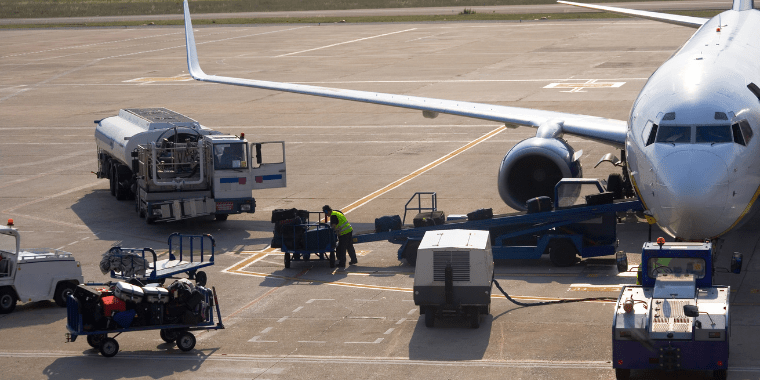Jul 19, 2022 Jan Uphues
ShareGiven the myriad of challenges facing airlines, airports and ground handlers today, managing their resources is especially important. Being operational ready in the face of staff shortages, flight irregularities, adverse weather conditions and other unexpected contingencies requires effective resource planning, scheduling, operations and analysis. These functions are exactly what Resource Management System in aviation provide cross diverse areas, from passenger check-in, security, transfer management, and boarding to aircraft line maintenance, loading/unloading, fueling, cleaning, water and lavatory service, de-icing, and movements, as well as baggage handling, air cargo transport, catering, and turnaround supervision.
WHAT FEATURES TO SEEK IN A RESOURCE MANAGEMENT SYSTEM IN AVIATION
To perform its role across all of these operational areas, the Resource Management System (RMS) must offer a wide range of high-performance features. For example, to facilitate optimum resource planning, the Resource Management System in Aviation should offer resource demand calculations, optimized demand coverage, what-if scenarios and simulations, and KPI analysis and reports.
Balancing fluctuating operational demands with individual workforce management needs requires that the RMS offer optimized roster creation and dynamic maintenance, along with time management capabilities. Additionally, the system should encompass web-based desktop and mobile apps to accommodate planners and staff.
When it comes to facilitating a quick response to time-critical operational needs, a best-in-class Resource Management System in Aviation will provide features such as algorithm-based creation and optimized task allocation, transparent monitoring of task progress and status, automated operational disruption management, as well as its web-based apps for use by dispatchers and staff.
Finally, it is important that the RMS’ functionality features aggregation and analysis of collected data which is enhanced by Artificial Intelligence (AI) and Machine Learning (ML). Other features that support data analysis and which should be sought in an RMS include dynamic and interactive KPI data presentation in both report and dashboard formats, and a graphical web-based front-end.
DRIVING THE BEST RMS RESULTS
As with any advanced IT system project, the success of an RMS application starts with the right project planning. The first step in planning for an RMS is knowing what level of automation and digitalization you are trying to achieve which relates to knowing:
- What resources will be managed by the RMS?
- What departments will use the RMS?
- Are their certain business requirements (e.g., rules, legal mandates, employee schedule/vacation/leave policies, special customer SLAs, etc.) that must be accommodated?
- What IT systems, solutions and technologies will be interacting with the RMS?
- What goals are you trying to achieve, and challenges are you trying to address?
Through this internal project assessment, you will be able to drill down to the details that will matter most in the RMS project implementation.
The project should also include an assessment of the RMS’ interfacing with other internal systems such as Flight Information System, Human Resource Information System, Business Information System.
VENDOR SELECTION AND PROJECT PLANNING
Once all these considerations have been made, the vendor selection process can be conducted. A vendor should be selected based on the company’s experience and proven track record in delivering high quality RMS projects. Next, the project structure can be established. Determining project team members from both the organization and the vendor, creating a project timeline with benchmarks for completing various phases, conducting pilot programs for testing and phasing in the solution, and completing user training would follow.
With a clear understanding of the value proposition a Resource Management System in aviation offers and how best to ensure the optimum project, airlines, airports and ground handlers can position themselves for greater operational efficiency and future-ready resiliency.
What are your thoughts about Resource Management System in aviation? Do you use it already or plan to introduce one? What are your concerns? Share it with us!
About our Expert

Jan Uphues
Marketing Manager
From the exhilarating rush of his very first flight, Jan Uphues was captivated by the world of aviation. Though that maiden voyage had its jittery moments, it set the course for a lifelong passion. Starting at INFORM in 2018, he combined it with his second love: crafting compelling content.


